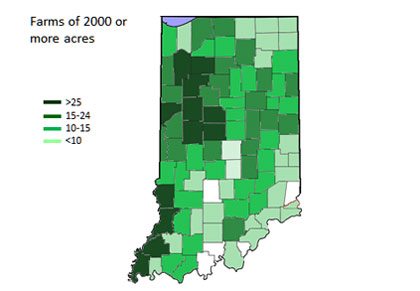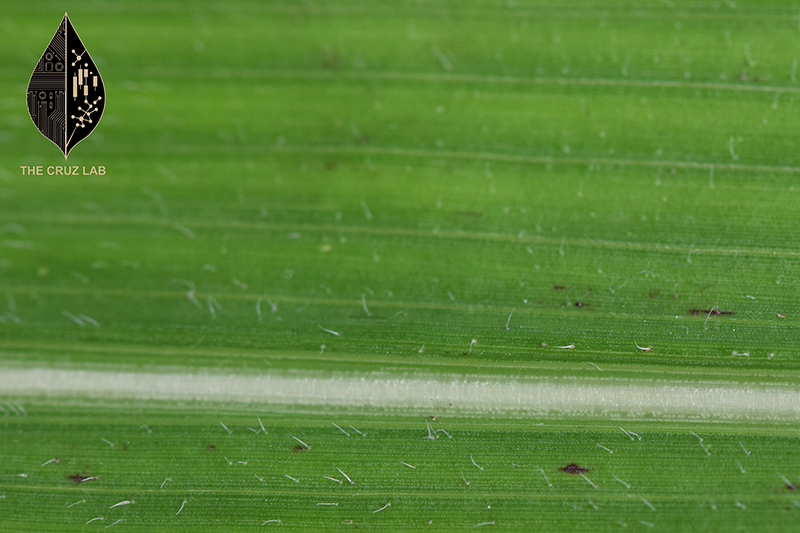Purdue University’s Center for Food and Agricultural Business studied the location of large-scale farmers across the country and how it related to a retailer’s market potential—the results may surprise you.

David Widmar is a research associate at Purdue University. |
If you talk to someone involved in agriculture long enough, the size of a nearby farm is bound to come up. Whether it’s the neighbor renting up all the land, the most desired seed customer or their most loyal tractor buyer, large farms are always fun to talk about. Ag folks talk about the biggest farmer they know as if the operation is surrounded by some kind of mystique.
One of the first topics that ag retailers talk about is the importance of the large producer. Large clients pull a lot of weight when they go into the market to purchase inputs: any level of margin multiplied over the number of units these operations work with will have a significant impact on the bottom line. In some cases, there could be motivation to sell to these producers at nearly zero margin, just to qualify for volume discounts from the retailer’s manufacturers.
Talking to input suppliers about large farmers often yields two polar opposite responses. Some retailers talk about how many large farmers they serve, while others talk about how few and far between these producers are—if they can be found at all. In some cases, large farmers are as plentiful as fish in a barrel. In other cases, it’s like a search for unicorns. Do these seemingly ideal customers even exist?
Large Farmers Across the Country
To help answer that question, researchers at the Purdue University Center for Food and Agricultural Business decided to figure out where large farmers are located. The latest available data on these topics is from the United States Department of Agriculture’s 2007 Census of Agriculture. Although a new survey has been sent out, data hasn’t been released and isn’t expected until early 2014. The center plans to revisit this topic once the new data has been released.
In 2007, the USDA found that 347,760 farms in the United States reported planting corn, planting only 248 acres on average. The USDA data breaks the farms into groups by number of acres. At the top end of the USDA reporting scale are farms with more than 5,000 acres of corn. How many of these 347,760 farms do you think reported having more than 5,000 acres? 0.067 percent. Not six percent, but 0.067 percent.
In 2007, the USDA reported that 233 farms planted more than 5,000 acres of corn. While this number seems small, it was a substantial increase from the 2002 survey, when only 67 farms reported planting more than 5,000 acres.
When it comes to soybeans, only 74 farms planted more than 5,000 acres, compared with 85 farms in 2002.
For wheat, a total of 300 farms reported planting more than 5,000 acres. Large wheat farms are the most plentiful in total numbers (300) and in relative terms (0.22 percent of the 136,103 total farms planting wheat). Large soybean farms are the rarest, with only 74 farms and 0.02 percent of all soybean farms planting more than 5,000 acres.
A close look at the large corn farms reveals that 116 of the 233 large corn farms are in Illinois (44), Nebraska (28), Iowa (23) and Indiana (23).
Indiana Data
Center researchers used the Indiana data for a deeper, more targeted look at farm sizes. Using the USDA’s 2007 Census of Agriculture, they evaluated farm size across the board for all crops. The highest-acre group reported by the USDA is “more than 2,000 acres,” so for this evaluation, that is how the largest farm category is classified.
In all, 1,286 Indiana farms fell into this group, or 2.12 percent of all Indiana farms. This number was up from 990 in 2002 and 713 in 1997. Knox County, located along the Illinois border in southern Indiana, is home to 45 farms with more than 2,000 acres, boasting the largest collection of these farms. Knox County and 11 other counties are home to a total of 376 large farms, which means that you’d have to actively search for an area not used by large farms in these counties.
On the other hand, in eastern Indiana, very few of these large farms exist. In some counties, such as Brown and Ohio, there is only one farmer with more than 2,000 acres. In these counties, large farms are a retailer’s crown jewel.
The two figures at right illustrate a story of farm size in Indiana. The first, showing the number of farms in the USDA’s largest acre group, highlights the concentration of large operations centralized in two western multi-county pockets. To work in this area would be a retailer’s dream.
In contrast, the second image shows the number of farms in the USDA’s smallest acre group (less than 260 acres), highlighting that these farms are more common in the eastern stretches of the state.
Moving from the Ohio border toward Illinois, small farms become less prevalent and the large farms become the norm.
Conclusions
While this data is a bit out of date (a 2007 survey being referenced in 2013), the implications are still relevant. First, the number of large farms is quite small, no matter which metric you use to measure it. While the overall trend toward larger farms, briefly pointed out in this report, is likely to continue, the fact will probably remain that less than one percent of corn farmers plant more than 5,000 acres and less than five percent (2.12 percent in 2007) of Indiana farmers harvest more than 2,000 acres. Overall, these farms just aren’t as common as one might think.
Secondly, the search for large farmer customers is a feast or famine situation. In some areas, large farms tend to dominate, but in others, they’re few and far between. In the United States, nearly 48 percent of the large corn farmers are in four states. In Indiana, large farms are most common in the west, while smaller farms dominate the east.
Retailers should always be aware of their customers. Compare how many large farmers are out there and how many are your customers. At the very minimum, knowing your customers will let you determine whether the type of customers you’re searching for exist. You don’t want to be searching for unicorns.
David Widmar is the research associate at Purdue University’s Center for Food and Agricultural Business. He can be reached at dwidmar@purdue.edu.
David Widmar













